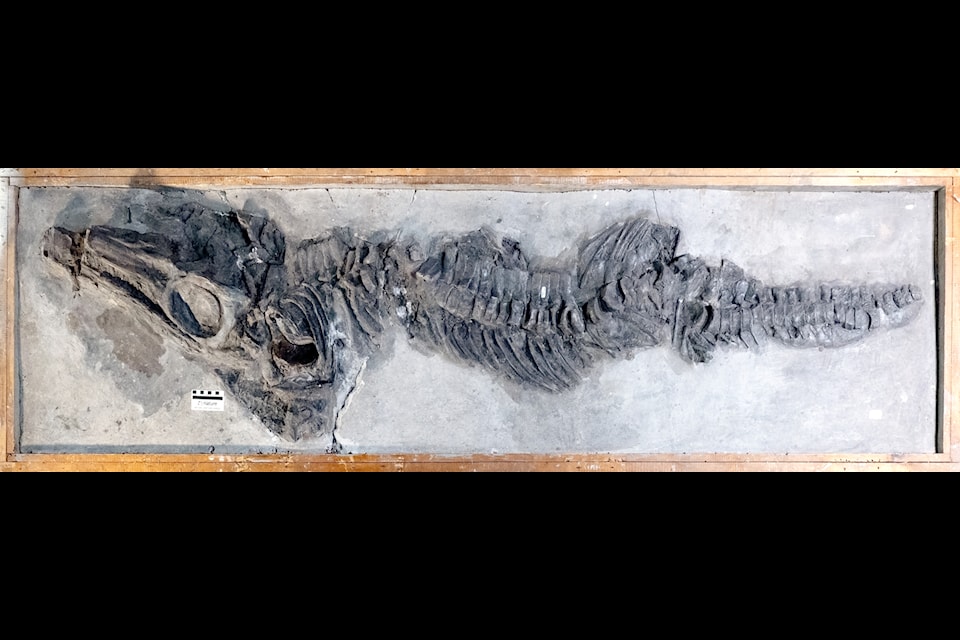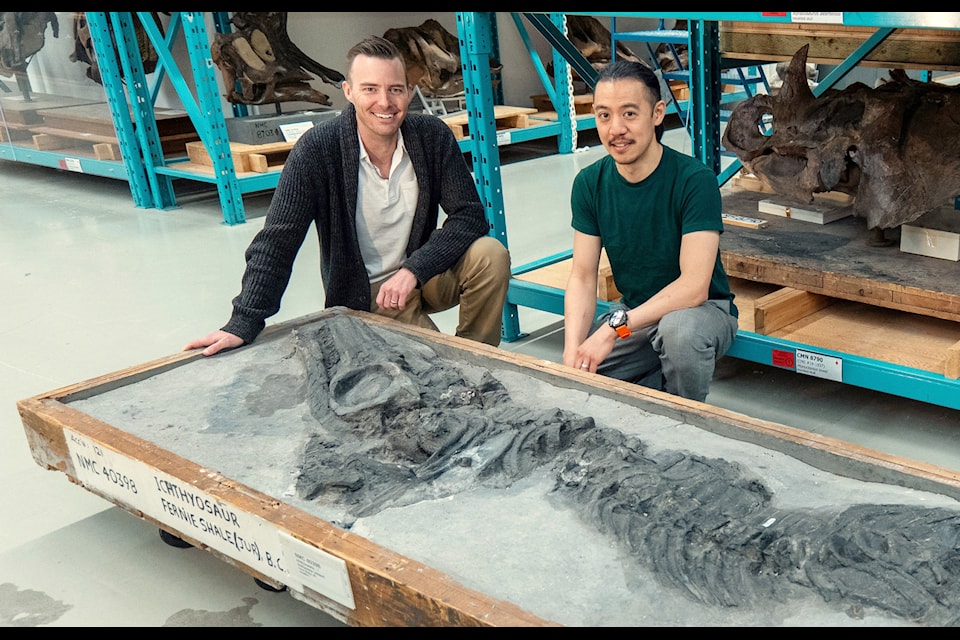A 190-million-year-old ichthyosaur fossil from Fernie, B.C., is now confirmed as North America’s most complete Early Jurassic marine reptile.
A Prehistoric Discovery Resurfaces in a Big Way
It’s not every day that a fossil discovered over a century ago makes waves in the science world—but that’s exactly what’s happening with a marine reptile affectionately dubbed the Fernie Swimmer. Originally found near Fernie, British Columbia in 1916, this ancient ichthyosaur is now making headlines as the most complete Early Jurassic specimen of its kind ever found in North America.
A Fish Tale With Reptilian Roots
The ichthyosaur—a sleek, fish-like predator that ruled the seas nearly 190 million years ago—was discovered by local resident Tom Prentice while fishing in the Elk River. At first glance, it resembled a dolphin, but don’t be fooled. Unlike dolphins, which are mammals, ichthyosaurs were reptiles. In fact, the two aren’t related at all. Their similar shapes are thanks to convergent evolution—when totally different creatures evolve the same look because they share a similar lifestyle.
“They filled the same ecological role,” explained Dr. Jordan Mallon, a palaeobiologist with the Canadian Museum of Nature. “But one came from land-living reptiles and the other from mammals.”
What Makes the Fernie Swimmer So Special?
New research has confirmed that this fossil—now officially named Fernatator prenticei, meaning “Fernie Swimmer” and honoring its discoverer—is North America’s best-preserved ichthyosaur from the Early Jurassic era. Measuring around 2.8 meters (with an estimated full length of 3.5 to 4 meters), it features a full set of bones, rare anatomical details, and even traces of ancient marine life (ammonites) that helped date it to about 187–190 million years ago.
Its completeness sets it apart from countless other ichthyosaur finds in the U.K. and Germany, where fossils are more commonly unearthed due to better rock exposure.
From Dusty Shelf to Paleontological Fame
Despite being stored at the Canadian Museum of Nature since 1917, the fossil went largely unnoticed for decades—until a casual conversation at a palaeontology banquet in 2022 changed everything. Dr. Mallon shared a photo of the skeleton with ichthyosaur expert Dr. Judy Massare, who immediately recognized its significance. That moment sparked new research, leading to its formal identification and scientific publication.
“It just sat there,” Mallon recalled. “When I joined the museum, I noticed it right away but found very little written about it. It deserved more attention.”
And now, it’s finally getting it.
Why It Matters
While Europe has provided a treasure trove of ichthyosaur discoveries, North America’s fossil record from the Early Jurassic is relatively sparse. That makes this find not just fascinating, but incredibly valuable to our understanding of marine life evolution during that period.
“This kind of discovery can fill in major gaps,” Mallon noted. “It helps us understand the diversity and evolution of these animals right here in our own backyard.”

A Reminder of Museums’ Hidden Treasures
The Fernie Swimmer is a glowing example of why museum collections matter. Fossils, bones, and artifacts may sit quietly for decades, but their stories remain alive—waiting for someone to unlock them.
“This is exactly why we preserve these specimens,” Mallon said. “Sometimes, it takes 100 years for the right eyes to see what’s been there all along.”













Leave a comment